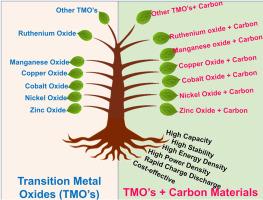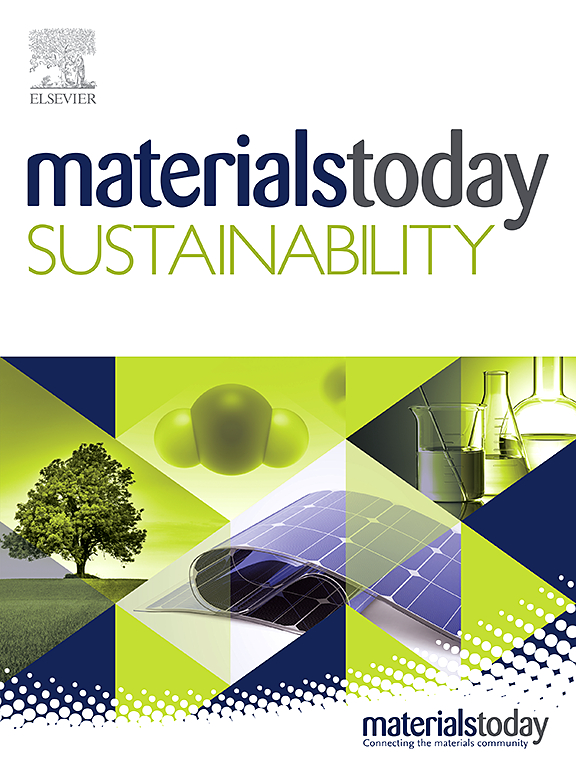Recent advances in pseudocapacitive electrode materials for high energy density aqueous supercapacitors: Combining transition metal oxides with carbon nanomaterials
IF 7.1
3区 材料科学
Q1 GREEN & SUSTAINABLE SCIENCE & TECHNOLOGY
引用次数: 0
Abstract
The demand for high-power and energy-dense electrochemical energy storage solutions has led to the utilization of pseudocapacitive materials. These materials store charges by undergoing Faradaic reactions at or near the electrode surfaces. They offer higher energy density than electric double-layer capacitors while maintaining the rapid charging/discharging capabilities characteristic of supercapacitors. This review delves into the synergistic relationship between transition metal oxides (TMOs) and carbon-based materials to create advanced supercapacitors. Combining the pseudocapacitive properties of TMOs with the high conductivity and carbon surface area, hybrid composites offer the potential to bridge the gap between energy and power density. The review comprehensively explores a range of TMOs, including ZnO, NiO, CoO, CuO, MnO2, and RuO2, and their integration with various carbon architectures. Key synthesis techniques, characterization methods, and electrochemical performance metrics are discussed to comprehensively understand these materials. Moreover, the review highlights recent advancements and identifies critical challenges to guide future research efforts toward developing high-performance and commercially viable supercapacitors based on TMO/carbon composites.

用于高能量密度水性超级电容器的伪电容电极材料的最新进展:过渡金属氧化物与碳纳米材料的结合
对高功率、高能量电化学储能解决方案的需求促使人们开始使用伪电容材料。这些材料通过在电极表面或其附近发生法拉第反应来存储电荷。与双层电容器相比,它们具有更高的能量密度,同时还能保持超级电容器特有的快速充放电能力。本综述深入探讨了过渡金属氧化物(TMO)与碳基材料之间的协同关系,以创造先进的超级电容器。混合复合材料将过渡金属氧化物的伪电容特性与高导电性和碳表面积相结合,有望缩小能量和功率密度之间的差距。本综述全面探讨了一系列 TMOs,包括氧化锌、氧化镍、氧化钴、氧化铜、二氧化锰和二氧化钌,以及它们与各种碳架构的整合。文章讨论了关键合成技术、表征方法和电化学性能指标,以全面了解这些材料。此外,该综述还重点介绍了最新进展,并指出了关键挑战,以指导未来的研究工作,开发基于 TMO/ 碳复合材料的高性能、商业上可行的超级电容器。
本文章由计算机程序翻译,如有差异,请以英文原文为准。
求助全文
约1分钟内获得全文
求助全文
来源期刊

Materials Today Sustainability
Multiple-
CiteScore
5.80
自引率
6.40%
发文量
174
审稿时长
32 days
期刊介绍:
Materials Today Sustainability is a multi-disciplinary journal covering all aspects of sustainability through materials science.
With a rapidly increasing population with growing demands, materials science has emerged as a critical discipline toward protecting of the environment and ensuring the long term survival of future generations.
 求助内容:
求助内容: 应助结果提醒方式:
应助结果提醒方式:


